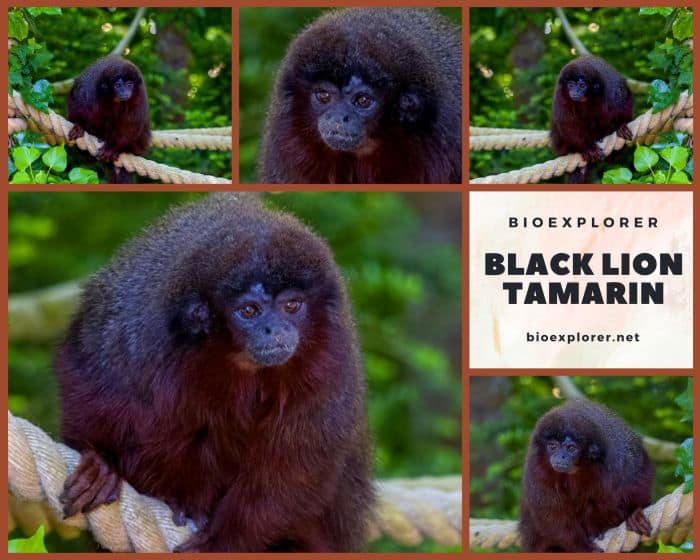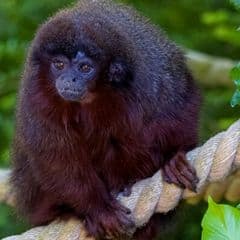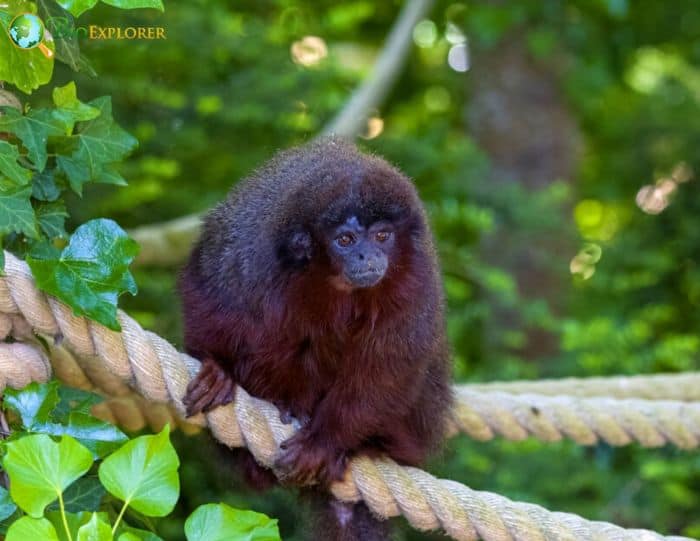
| Animalia | Primates | Callitrichidae | Leontopithecus | Leontopithecus chrysopygus |


- Common Name: Black Lion Tamarin
- Taxonomy Classification Year: 1823
- Monkey Size: 20 to 33.5 cm (7.87 to 13.19 in)
- Skin Color(s): Black
- Habitat: Forest, rainforest
- Diet: Omnivorous
- Native Countries: Brazil
Black Lion Tamarin Distribution
Black Lion Tamarin Characteristics

The black lion tamarin[1], also called the golden-rumped lion tamarin, is a lion tamarin native to the Brazilian state of Sao Paulo, almost exclusively in Morro do Diabo State Park.
- Black lion tamarin is almost completely covered with dense, silky black hairs. There are only differences at the rear.
- The buttocks, thighs, and underside of the tail are reddish brown. This gives the primate its common name, the golden-rumped lion tamarin.
- The face of the species is hairless, as are the hands and feet, which are black to dark gray.
- The black lion tamarin’s hind legs are generally longer than the front legs, and the tail is not prehensile.
- All toes have a sharp, crescent-shaped nail used for grasping trees, except for the big toe with a flat nail.
What Do Black Lion Tamarins Eat?
The Black Lion Tamarin feeds on variety of food sources including[¶]:
- Queen Palm (Syagrus romanzoffiana)
- Barbados Shrub (Pereskia aculeata)
- Iguana Hackberry (Celtis iguanaea)
- Shortleaf Fig (Ficus citrifolia)
- Birds (Aves)
- Répteis (Reptilia)
What Eats Black Lion Tamarins?
Cobra (Serpentes), Chouettes (Strigiformes), Falconiforms (Falconiformes) and Cats (Felidae) predate Black Lion Tamarins[§].
Black Lion Tamarin Facts
- Its limited geographic range makes it the rarest of the New-World monkeys.
- Within the Leontopithecus genus, the black lion tamarin is the largest. It has the lowest calls but uses more extended tones than other species.
- They are typically found in groups of 4-9 and live in primary and secondary forests along the perimeter of their home range.
- The black lion tamarin monkey’s seasonal diet varies depending on its travel habitats.
- The species uses calls to defend its territory, attract a mate, maintain group cohesion, and make contact with members that may have been lost.
Suggested Reading: All Monkeys
Cite This Page
APA7MLA8Chicago
BioExplorer.net. (2025, December 26). Black Lion Tamarin. Bio Explorer. https://www.bioexplorer.net/animals/mammals/monkeys/black-lion-tamarin/.
BioExplorer.net. "Black Lion Tamarin" Bio Explorer, 26 December 2025, https://www.bioexplorer.net/animals/mammals/monkeys/black-lion-tamarin/.
BioExplorer.net. "Black Lion Tamarin" Bio Explorer, December 26 2025. https://www.bioexplorer.net/animals/mammals/monkeys/black-lion-tamarin/.











